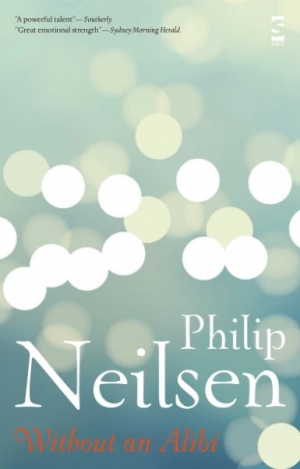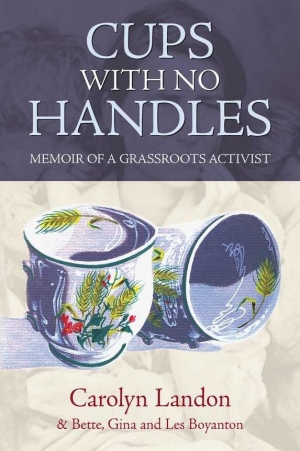Archive
In his final, unfinished opus, the German writer Max Weber presented his exemplar of irrational, arbitrary law-making by describing an image of a Muslim qadi, or judge, sitting beneath a palm tree, dispensing justice as he saw fit. Later, as scholars began to examine Western portraits of the east – particularly in the wake of Edward Said’s critique of Orientalism – Weber’s description was itself held up as an example of unthinking and condescending Western judgement. More recently, as the Western and Islamic worlds have meshed and clashed – over oil, land, beliefs and geopolitics – the stereotypical image of the Muslim religious leader has been assigned a whole new set of connotations, involving fanaticism, violence and doom: the qadi remains charmingly austere, but no longer benign.
... (read more)Bernard Smith’s new book, The Formalesque: A Guide to Modern Art and Its History is aimed directly at those school and university students who, he writes, ‘may need an introductory primer to the art history of the 20th century’. Although it offers a lucid and accessible survey of familiar territory, The Formalesque is by no means a straightforward textbook. Smith’s persuasive, even pugnacious style has remained remarkably undiminished by time (the author is now in his nineties and this, as he himself has said, will probably be his last book).
... (read more)In the 1990s the Smithsonian Institution conducted a comprehensive survey of visitors to exhibitions in the United States and concluded that the majority of viewers, while retaining impressions of individual objects, are unlikely to take much note of an exhibition’s theme. That came as a surprise to art gallery and museum professionals, who had recently put much effort into didactic displays, with a proliferation of wall texts and increasingly sophisticated methods of thematic presentation. It should have come as no surprise. The objects we see assembled in exhibitions were produced separately. The co-opting of works of art in an exhibition is in a critical sense different from the organisation of parts within a book or film, for example.
... (read more)The title of this rich and varied collection of poetry by Philip Neilsen comes from a poem entitled ‘First Creative Writing Class’:
... (read more)I have only just begun to know
what a cloud is and could be.
Poetry comes without an alibi,
in lightning flashes of sanity.
The word ‘memoir’ is used with a nice precision in the title of this beautifully written book. The Macquarie Dictionary distinguishes between the singular and the plural meanings of the word: ‘memoirs’ are autobiographical, ‘records of one’s own life and experiences’; a ‘memoir’ is a biography. Almost all of the book is written in the voice of its protagonist, Bette Boyanton, with some sharp interventions from her daughter Gina; her husband Les is credited as a co-author, though he does not speak. But the book also stands firmly as a biography, elegantly crafted by its major author, Carolyn Landon.
... (read more)Childhood is full of revelatory moments; sometimes shocking instants of understanding that people, events and relationships are not as they seem. They can happen in adulthood too, but those in childhood can have an intensity that makes them deeply formative. They might be subtle eye-openers or life-changing epiphanies, but they all cause a shift in perspective that changes one’s perception of the world. These six new books contain transformative moments for their protagonists, from the realism of family secrets to the fantasy of high-adventure mysteries.
... (read more)When did you start reading ABR?
That must have been in the mid-1980s (so long ago!). I was running the marketing department at Oxford University Press in Melbourne. A certain future ABR Editor was right next door, marketing the science and medical books. During my years at OUP, the Editor at ABR I had most to do with was Rosemary Sorensen.
... (read more)In 1881 Charles O’Neill abandoned a career in New Zealand and moved to Sydney, settling in The Rocks, close to the Marist fathers at St Patrick’s on Church Hill. Soon he had gathered about him a group of men keen to do something about the poverty they saw around them under the name of the Society of St Vincent de Paul. O’Neill was then in his early fifties, having been born in 1828 in Dumbarton, Scotland, the youngest of eleven children in the family of Irish Catholic parents.
... (read more)Now aged in her mid-seventies, the activist, artist and one-time parliamentarian Joan Coxsedge has penned her memoirs. Cold Tea for Brandy is as entertaining a read as her own varied life seems to have been. Decades of public advocacy, a firm – some would say a fixed – moral compass and an illustrator’s gift for precise impression have given Coxsedge a writing style to be admired. Her prose is brisk, simple, amusing and easy-going, laced with an old-fashioned Australian vernacular. Some readers may find the writing as anachronistic as the socialist beliefs that Coxsedge has so ardently espoused for decades. Still, the clarity of her writing flows organically from the that of her politics.
... (read more)One of the National Library’s newest treasures, and probably its most significant acquisition in the past twelve months, is a small theatre playbill printed in Sydney and dated 30 July 1796. At 211 years old, it is the earliest surviving document printed in Australia. The playbill was presented by the prime minister of Canada, Stephen Harper, to the then prime minister of Australia, John Howard, at a ceremony held at Parliament House on 12 September 2007. It advertises performances of three plays at the ‘Theatre, Sydney’: Jane Shore; The Wapping Landlady; and The Miraculous Cure.
... (read more)







